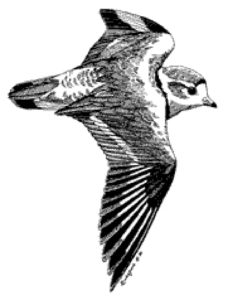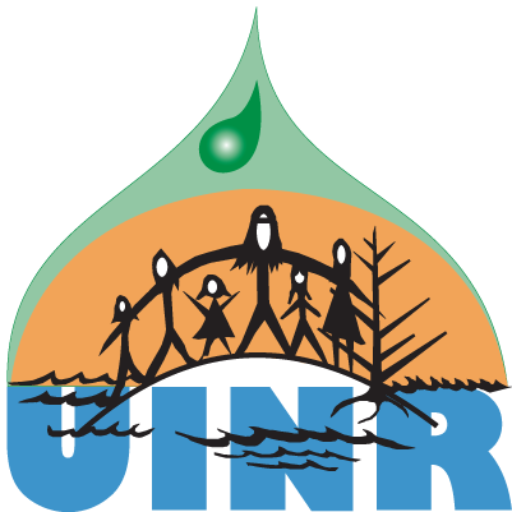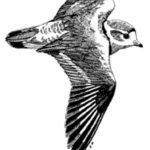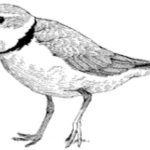 The piping plover (Charadrius melodus) is a bird found only in North America and is currently listed under the Species At Risk Act (SARA) as endangered. The adult is a small, sandy-colored bird with a white underbelly and black ring around its neck. Other distinctive features include a black band across its crown, an orange bill and yellow-orange legs. In the winter months, the black markings disappear.
The piping plover (Charadrius melodus) is a bird found only in North America and is currently listed under the Species At Risk Act (SARA) as endangered. The adult is a small, sandy-colored bird with a white underbelly and black ring around its neck. Other distinctive features include a black band across its crown, an orange bill and yellow-orange legs. In the winter months, the black markings disappear.
Along the Atlantic coast of North America it breeds on sandy beaches along the Canadian Maritime provinces down to South Carolina and winters along the Gulf of Mexico, the southern Atlantic coast and in a few Caribbean Islands. Piping plovers arrive on the shores of Cape Breton in late March and start nesting between late April and early August, laying two-four eggs. They nest on sparsely vegetated, flat, sandy or gravel-like beaches. Both parents incubate the eggs which hatch 27-29 days later in early June. Shortly after hatching they are able to feed themselves and are usually fledged by late July to early August.
The Bras d’Or Lakes have similar physical habitats for the piping plover compared to the Atlantic Coast of Unama’ki, however, the idea of the Bras d’Or Lakes as piping plover habitat has often been over-looked.
Twenty beaches along the Atlantic coast of Cape Breton Island are monitored yearly for piping plovers. As of 2003, only three of these sites are known to be existing piping plover nesting areas and only two are known to be pre-existing nesting areas. Initial reports through traditional ecological knowledge (TEK) suggest that piping plover populations exist along some of the sandy areas of the Bras d’Or Lakes, especially in Malagawatch. Malagawatch is an area in Unama’ki where all five Mi’kmaq communities in Cape Breton have equal access as a hunting, fishing and gathering area. Many beaches and shoreline along the Bras d’Or Lakes were not examined as piping plover habitats until 2004.
During the summer of 2004, UINR completed a study on piping plovers in the Bras d’Or Lakes. In this study TEK, surveys and habitat identification were conducted. One hundred and two beaches were surveyed for habitat suitability. Sixty-two of these beaches appeared to be suitable breeding habitat. UINR continued additional research in 2005 to determine if piping plovers were present in the Bras d’Or Lakes.
The research questions UINR investigated were included:
TEK on sighting obtained from the Unama’ki communities (Chapel Island, Wagmatcook, Membertou, Waycobahq, Eskasoni and Malagawatch residents);
Are there sites that would make good nesting and feeding areas;
Are there any existing piping plover populations in the Bras d’Or Lakes?
In 2004, 102 beaches were examined to be potential piping plover habitat. Sixty-two beaches appeared to be suitable breeding habitat, and 40 appeared to be unsuitable. Some results have changed due to the erosion of some of the shorelines. In 2005, seven suitable beaches were reclassified as unsuitable, bringing the total of suitable piping plover nesting beaches around the Bras d’Or Lakes to 55.
According to information collected from the TEK surveys, piping plovers have been seen in areas around the Bras d’Or Lakes. During this survey, however, no piping plovers were found. Future examination of these beaches should be periodically conducted to determine if there is a presence of piping plovers, especially on the beaches where people believe to have seen these birds.
From UINR Marten – Vol.1. Issue.2 – Winter 2005


